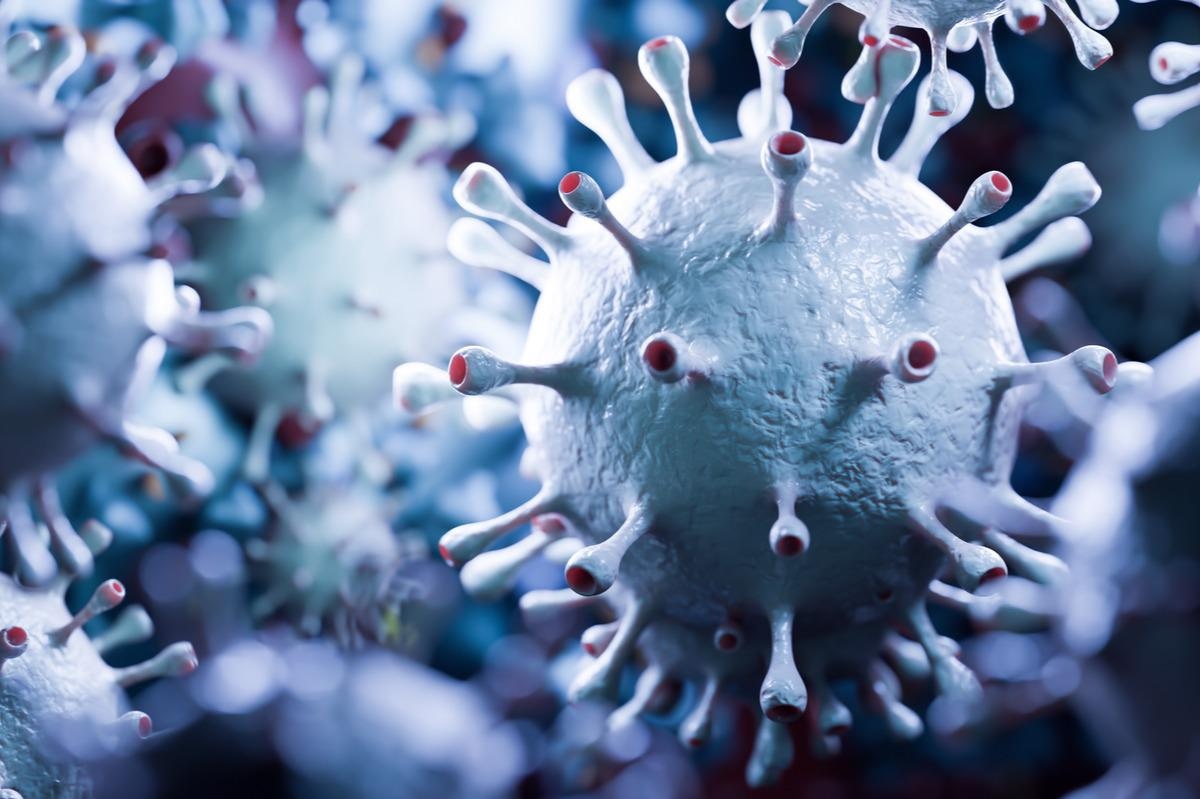Ultralong bovine antibody targets cryptic and conserved epitope on SARS-CoV and SARS-CoV-2

In a recent article posted to the bioRxiv* preprint server, researchers identified an ultralong bovine antibody that neutralizes severe acute respiratory syndrome coronavirus 2 (SARS-CoV-2) and severe acute respiratory syndrome coronavirus (SARS-CoV).

Background
The coronavirus disease 2019 (COVID-19) pandemic has brought to light the enormous threat that zoonotic and highly transmissible pathogens pose to the global populations, specifically when prior immunity is limited.
Although COVID-19 vaccinations have shown to be quite effective in decreasing SARS-CoV-2 transmission and averting severe illness, this might not be the case for all pathogens. Furthermore, not everyone develops sufficient immunity following SARS-CoV-2 vaccinations, necessitating the development of additional therapies that can be implemented quickly in the event of a new pathogen.
Broadly neutralizing antibodies target conserved epitopes and have a lot of potential as antibody-based treatments, especially given the continuous evolution of SARS-COV-2 antigens. Some bovine antibodies are highly proficient at binding conserved, glycosylated epitopes because of their ultralong complementarity determining region heavy chain 3 (CDRH3). Moreover, the longest known CDRH3 domains are possessed by bovine ultralong antibodies.
About the study
In the present study, the scientists isolated ultralong bovine H-chains with neutralizing capacity against SARS-CoV-2 and similar CoVs. Based on prior reports that the ultralong bovine H-chains couple with a comparatively invariable Vλ light chain, the team built a single-chain variable fragment (scFv) framework to which ultralong H-chain-only libraries could be cloned and produced.
The researchers employed polyhistidine-tagged (His-tagged) SARS-CoV-2 spike (S) glycoprotein and mammalian cell surface display to isolate an ultralong scFv from a SARS-CoV-2-naïve H-chain library that engages with the receptor-binding domains (RBDs) of SARS-CoV and all the existing SARS-CoV-2 variants. Further, human embryonic kidney 293T (HEK293T) cells were used for mammalian cell culture. The researchers utilized site-directed mutagenesis and differential hydrogen-deuterium exchange mass spectrometry (HDX-MS) to determine the mechanism of neutralization of lentiviruses pseudotyped with SARS-CoV-2 S and SARS-CoV S protein by the identified bovine paratope.
Findings and discussions
The study results demonstrated the discovery of a bovine extensively reactive CDRH3, named B9-scFv, from a library of <1 x 104 SARS-CoV-2-naïve H-chain sequences. The isolated ultralong B9-scFv interacted with RBDs of SARS-CoV and all prevailing SARS-CoV-2 variants. Additionally, the ultralong CDRH3 bound to SARS-CoV RBD approximately 50-times more strongly than SARS-CoV-2.
The bovine antibody-targeted epitope was found in a cryptic cleft on the inner region of the SARS-CoV and SARS-CoV-2 RBD, which was only accessible transiently due to inter-domain motions. This epitope was only discovered once previously as the target for two different pan-sarbecovirus antibodies (7D6 and 6D6) when several repeated vaccinations were necessary.
In addition, five vaccinations of mice with either a combination of SARS-CoV and SARS-CoV-2 S protein and the Middle East Respiratory Syndrome CoV (MERS-CoV) RBD protein or SARS-CoV-2 S-2 subunit protein (S-2P) were required for the isolation of the 7D6 and 6D6 antibodies. On the contrary, from a limited library of bovine CDRH3s, B9-scFv was isolated in the present study. Furthermore, the 7D6 and 6D6 antibodies demonstrated destabilization of the perfusion S complex.
B9-scFv did not demonstrate competition with SARS-CoV pseudotyped lentiviruses for angiotensin-converting enzyme 2 (ACE2) interaction. Yet, B9-scFv neutralized SARS-CoV pseudotyped viruses with a half-maximal inhibitory concentration (IC50) of 468 nM, most likely by disrupting the stability of the prefusion complex via a crucial glycan contact interference. Mutagenesis and HDX data depicted numerous critical contacts which were shared between the epitope of B9-scFv and 7D6 and 6D6 antibodies, including 457-467 residues on the β7-β8 loop of the RBD.
B9-scFv demonstrated a truncated descending and ascending β-stranded stalk, with few residues at the 101RD102 variable diversity (VD) junction and no alternate tyrosine motif at the 3’ terminus of D8-2. These characteristics would most likely affect the stalk's angle, length, and flexibility and the manner in which the disulfide-bonded loops of the B9 knob domain interact with the CoVs RBD proteins.
Conclusions
The study findings demonstrated the identification of a bovine ultralong CDRH3, named B9-scFc, that neutralized viruses pseudotyped with SARS-CoV and all current SARS-CoV-2 variants' S protein but not via competing with viral RBD for ACE2 receptor binding.
The researchers found that the presently discovered ultralong CDRH3 neutralized the SARS-CoV S protein via the identification of a conserved, seldom seen, and cryptic epitope that overlaps the target of 7D6 and 6D6 pan-sarbecovirus antibodies. The B9-scFc-targeted epitope in SARS-CoV-2 and SARS-CoV was glycan-shielded and only became temporarily accessible through inter-domain movements.
Overall, the present investigation identified the first bovine anti-sarbecovirus paratope and illustrated the potential of the bovine system for rapidly discovering widely reactive new ultralong CDRH3s targeting conserved vulnerable sites on emerging viral pathogens and their variants.
*Important notice
bioRxiv publishes preliminary scientific reports that are not peer-reviewed and, therefore, should not be regarded as conclusive, guide clinical practice/health-related behavior, or treated as established information.
- Matthew J Burke, James NF Scott, Thomas Minshull, Peter G Stockley, Antonio N Calabrese, Joan Boyes. (2022). An Ultralong Bovine CDRH3 that Targets a Conserved, Cryptic Epitope on SARS-CoV and SARS-CoV-2. bioRxiv. doi: https://doi.org/10.1101/2022.04.06.487306 https://www.biorxiv.org/content/10.1101/2022.04.06.487306v1
Posted in: Medical Science News | Medical Research News | Disease/Infection News
Tags: ACE2, Angiotensin, Angiotensin-Converting Enzyme 2, Antibodies, Antibody, Cell, Cell Culture, Coronavirus, Coronavirus Disease COVID-19, covid-19, Enzyme, Evolution, Glycan, Glycoprotein, immunity, Kidney, Mass Spectrometry, MERS-CoV, Pandemic, Pathogen, Protein, Receptor, Respiratory, SARS, SARS-CoV-2, Severe Acute Respiratory, Severe Acute Respiratory Syndrome, Spectrometry, Syndrome, Tyrosine

Written by
Shanet Susan Alex
Shanet Susan Alex, a medical writer, based in Kerala, India, is a Doctor of Pharmacy graduate from Kerala University of Health Sciences. Her academic background is in clinical pharmacy and research, and she is passionate about medical writing. Shanet has published papers in the International Journal of Medical Science and Current Research (IJMSCR), the International Journal of Pharmacy (IJP), and the International Journal of Medical Science and Applied Research (IJMSAR). Apart from work, she enjoys listening to music and watching movies.
Source: Read Full Article